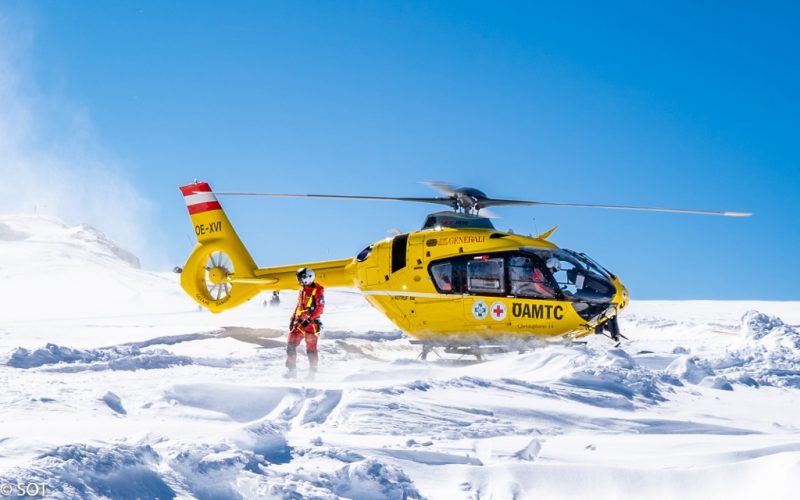The crews of the ÖAMTC air ambulance completed 17.281 missions in 2020. Compared to 2019, this is a decrease of 8,7 percent. “The fact that we flew less is - how could it be otherwise - due to the corona pandemic. Of course, our emergency helicopters were still in constant use and took off an average of 47 times a day, ”explains Reinhard Kraxner, managing director of ÖAMTC air ambulance. "But it is also a fact: Measures such as lockdowns, contact and exit restrictions, the absence of summer and winter tourism or home office have led to a situation in which we are deployed that has partly differed from previous years."
It was clear to see in the mission statistics, for example, that the measures were relaxed in the summer: In contrast to lockdown times, the ÖAMTC air ambulance recorded almost ten percent more missions between the beginning of July and mid-September than in the same period of 2019. " It should be noted that at the end of May 2020 we opened an additional base with Christophorus 17 in Upper Styria, ”explains Kraxner.
In 2020, the ÖAMTC emergency doctor helicopters were again alerted most frequently about internal and neurological emergencies (e.g. heart attacks or strokes) - around 45 percent of all missions can be attributed to this. Accidents that occurred during leisure time, at work, at school or in the home environment accounted for 17 percent of the missions, traffic accidents only 7 percent. 666 people had to be rescued from impassable terrain, some of them under the most difficult of conditions. During the night, the Christophorus ambulance helicopters took off for 2020 missions in 582. A look at the individual federal states shows that most missions were flown in Lower Austria (3.676). This is followed by Styria (2.858), Tyrol (2.522) and Upper Austria (2.446).
The effects of Corona were not only evident in the number of deployments in 2020. “When it began to appear in March that Austria would not be spared from the pandemic either, we immediately took logistical, organizational and training measures. By acting quickly and prudently, we have succeeded in ensuring unrestricted operation at all times, ”says Kraxner. "Our security concept has proven itself and will be further optimized and refined until this crisis is overcome."
The aim of the ÖAMTC air rescue was and is to ensure rapid and reliable emergency medical help from the air at all times - regardless of external influences. “Despite Corona, we worked on that with full energy in 2020 as well. So at the end of May we were able to put our new base Christophorus 17 into operation. We have also completed the pilot project for the dual operation of our intensive-care transport helicopter, and will therefore go into regular operation in 2021. At the end of the year it was also possible to launch a future-oriented fleet concept with the introduction of up to six new 4-axis autopilot helicopters of the type H135 ”, reports the managing director of ÖAMTC air rescue. "So we will continue to be a reliable partner in the Austrian rescue service at all times."
The number of ÖAMTC emergency helicopters deployed - numbers in brackets for 2019
Christophorus 1 Innsbruck 689 (813) Christophorus 2 Gneixendorf 1.381 (1.468) Christophorus 3 Wiener Neustadt 1.098 (1.361) Christophorus 4 Reith 865 (935) Christophorus 5 Zams 734 (835) Christophorus 6 Salzburg 1.363 (1.512) Christophorus 7 Lienz 728 (701) Christophorus 8 Nenzing 785 (818) Christophorus 9 Vienna 1.443 (1.724) Christophorus 10 Linz 1.025 (1.185) Christophorus 11 Klagenfurt 1.256 (1.332) Christophorus 12 Graz 1.218 (1.482) Christophorus 14 Niederöblarn 684 (877) Christophorus 15 Ybbsitz 851 (943) 16 Oberwart 935 (1.053) Christophorus 17 St. Michael 579 (-) Christophorus Europa 3 Suben 1.408 (1.613) Christophorus 33 (ITH) Wiener Neustadt 475 (361) Christophorus 99 Niederöblarn 239 (266) Additional machine 0 (3)







 trail (for them it's free to use)
trail (for them it's free to use)